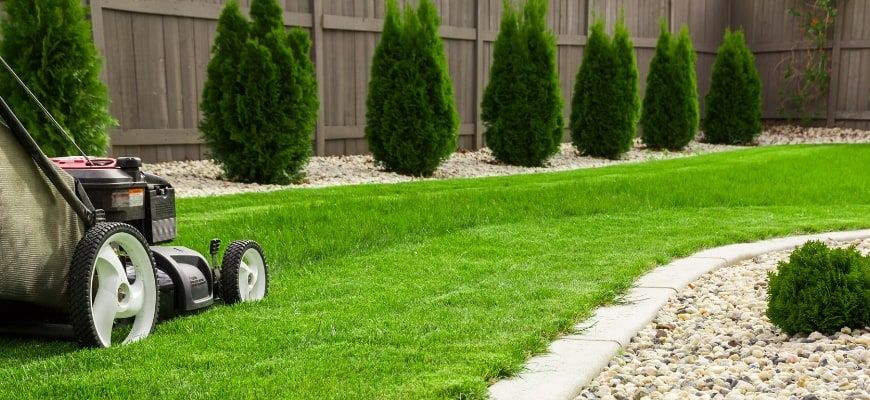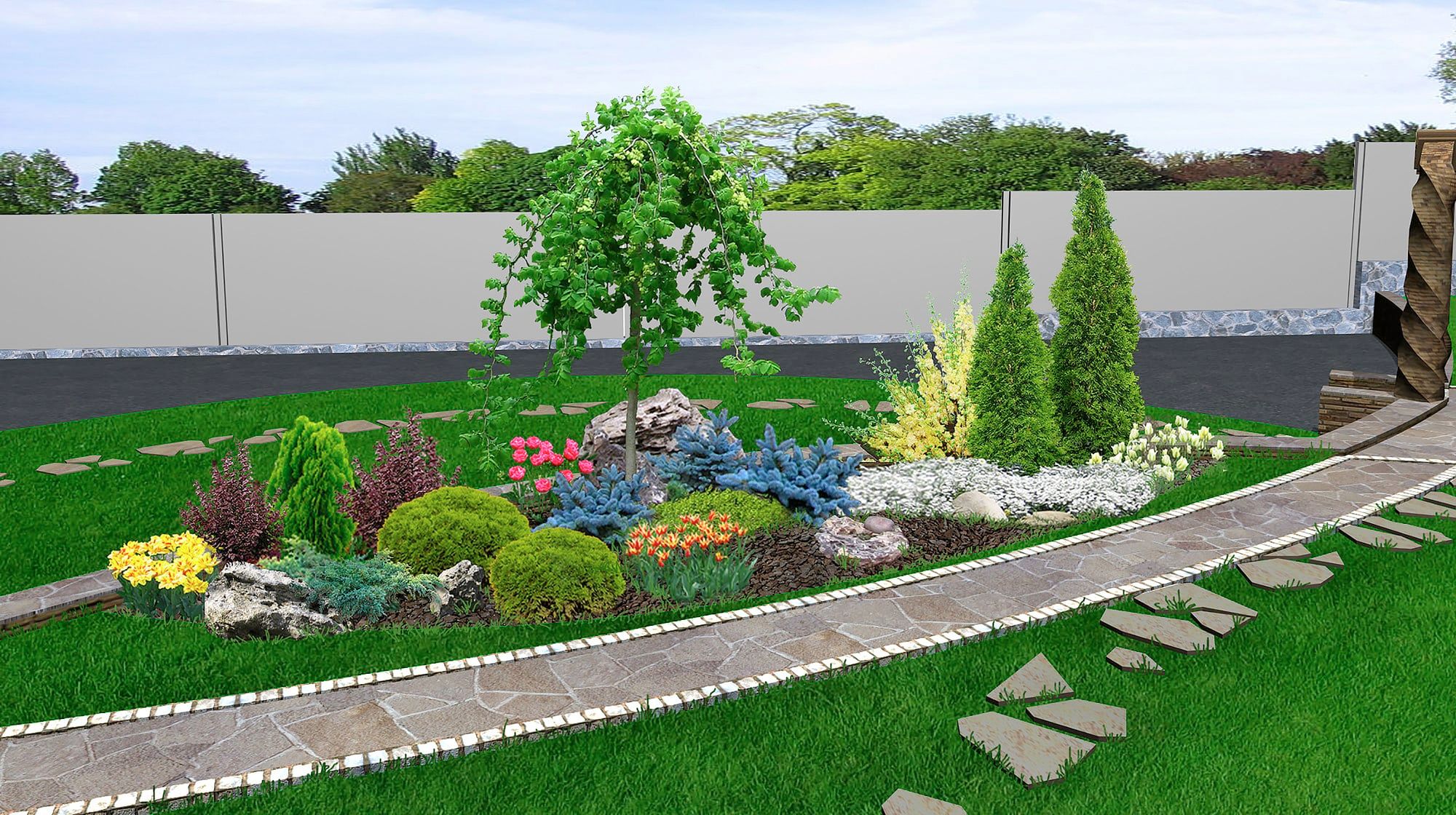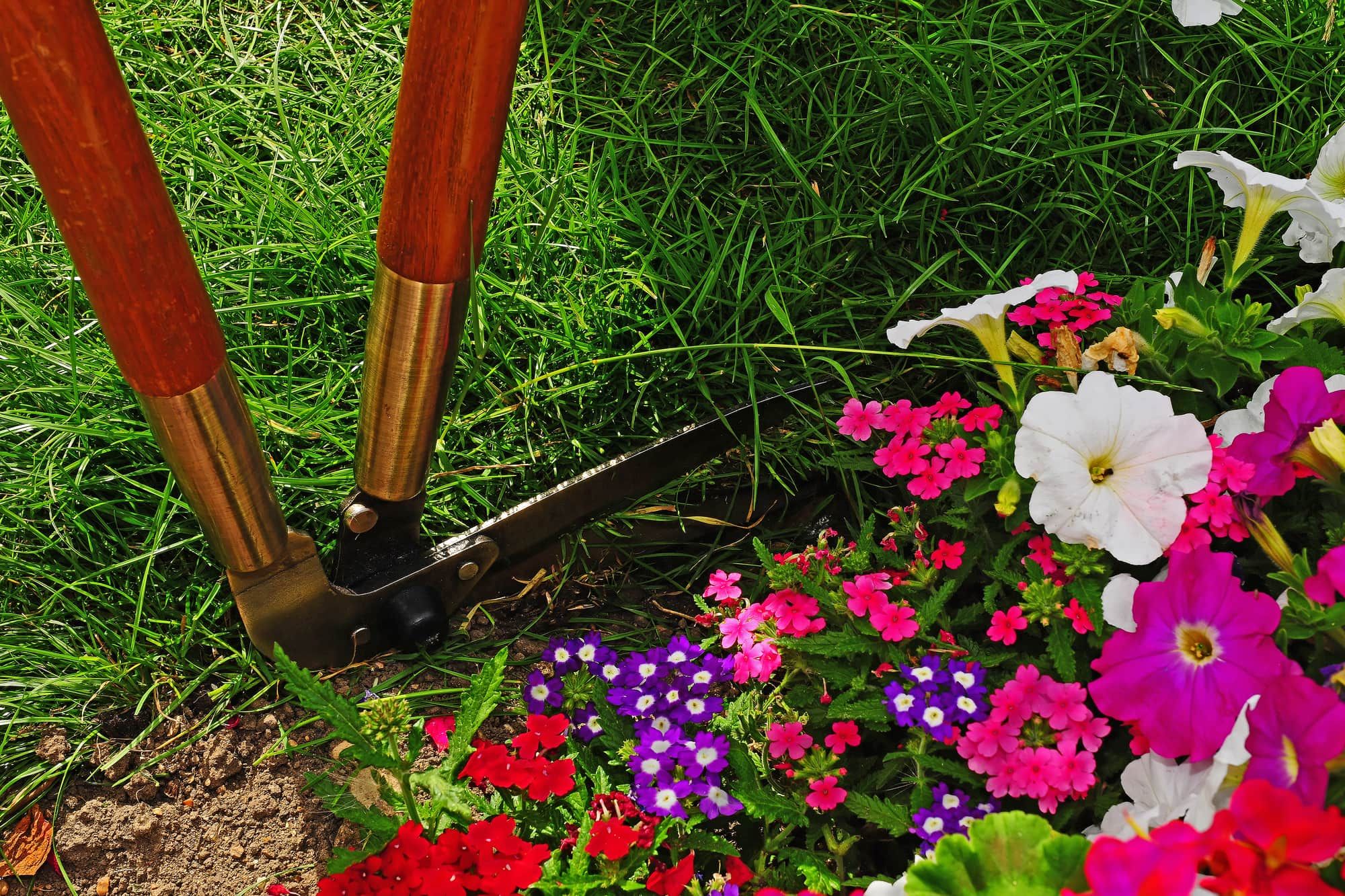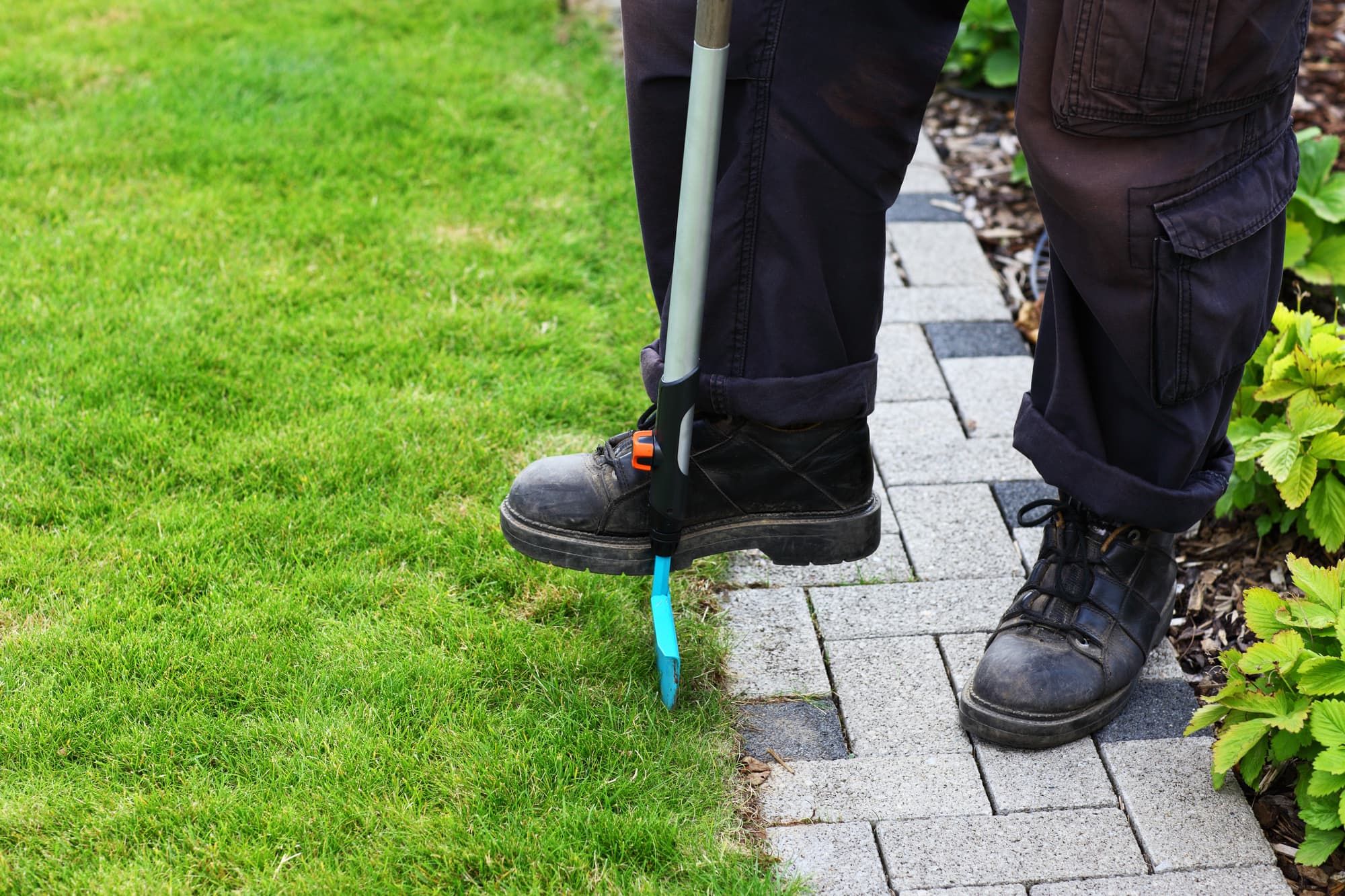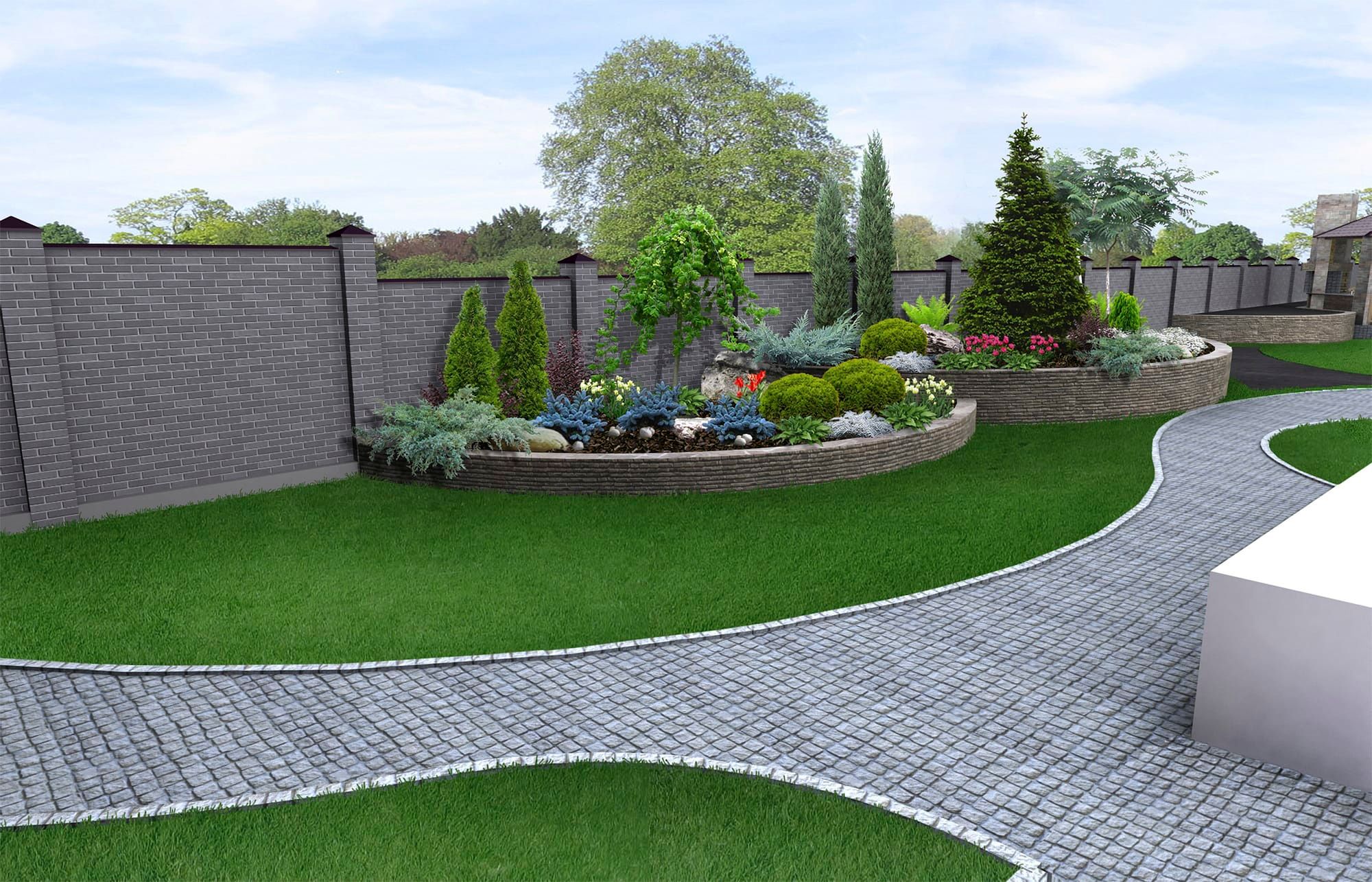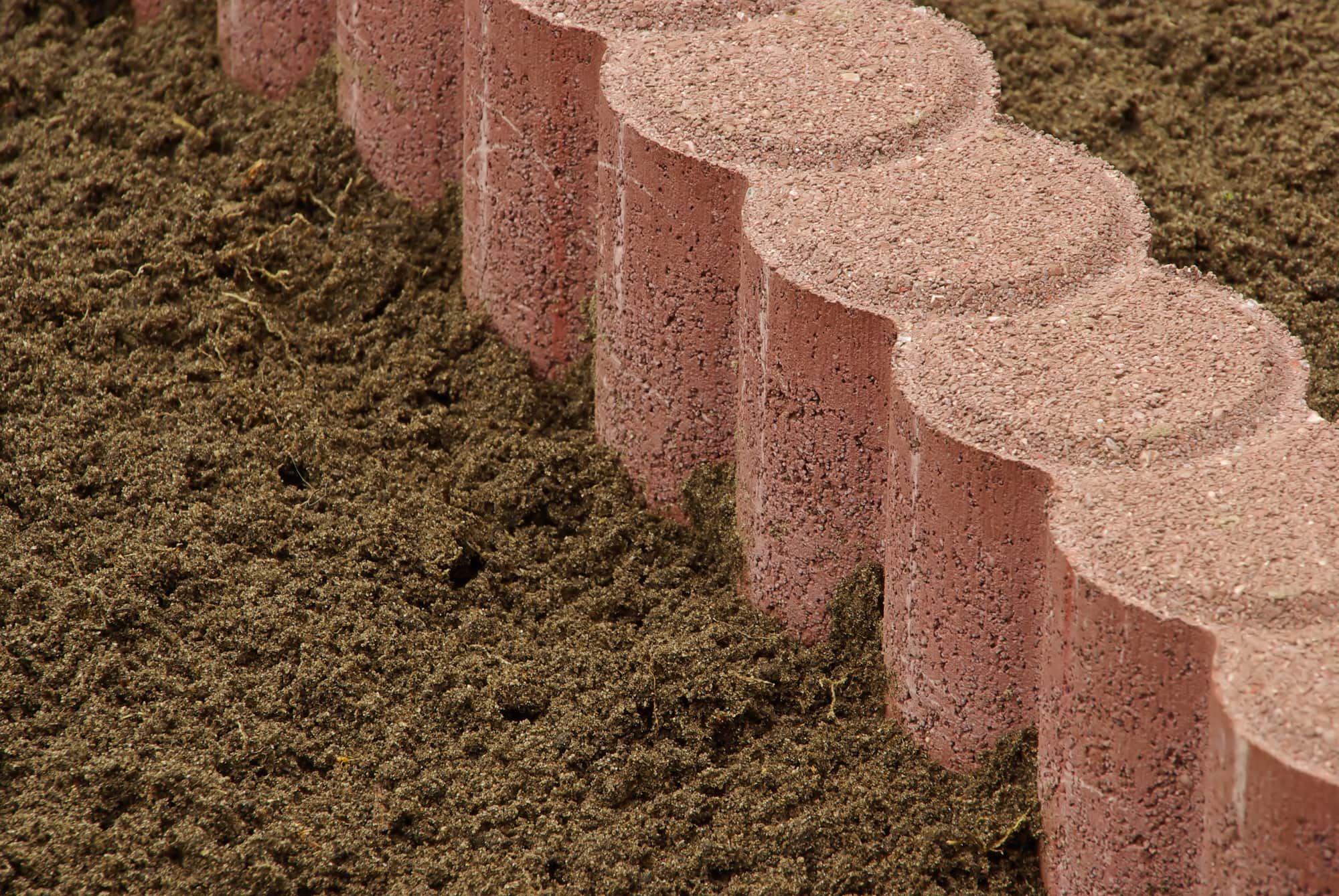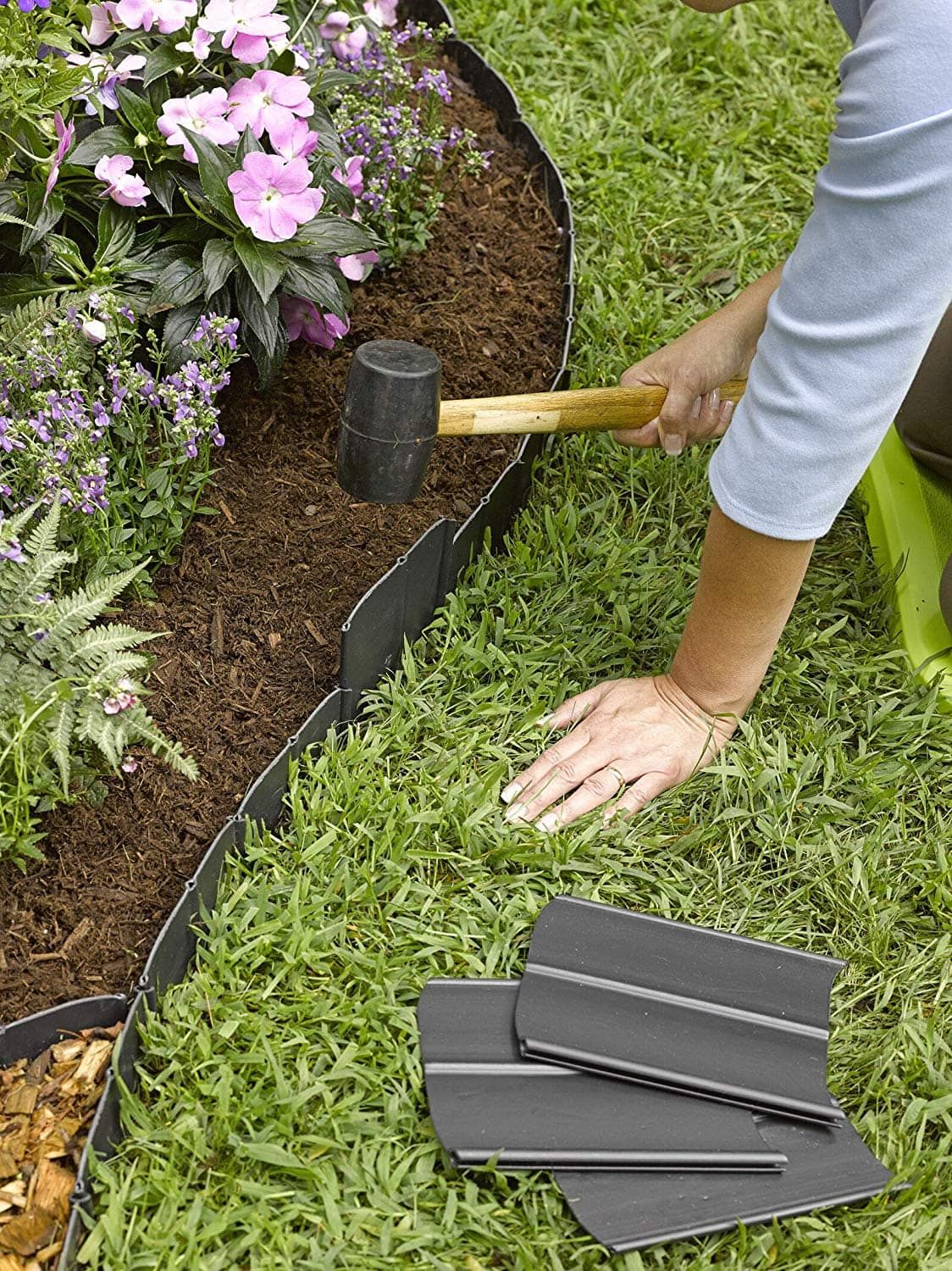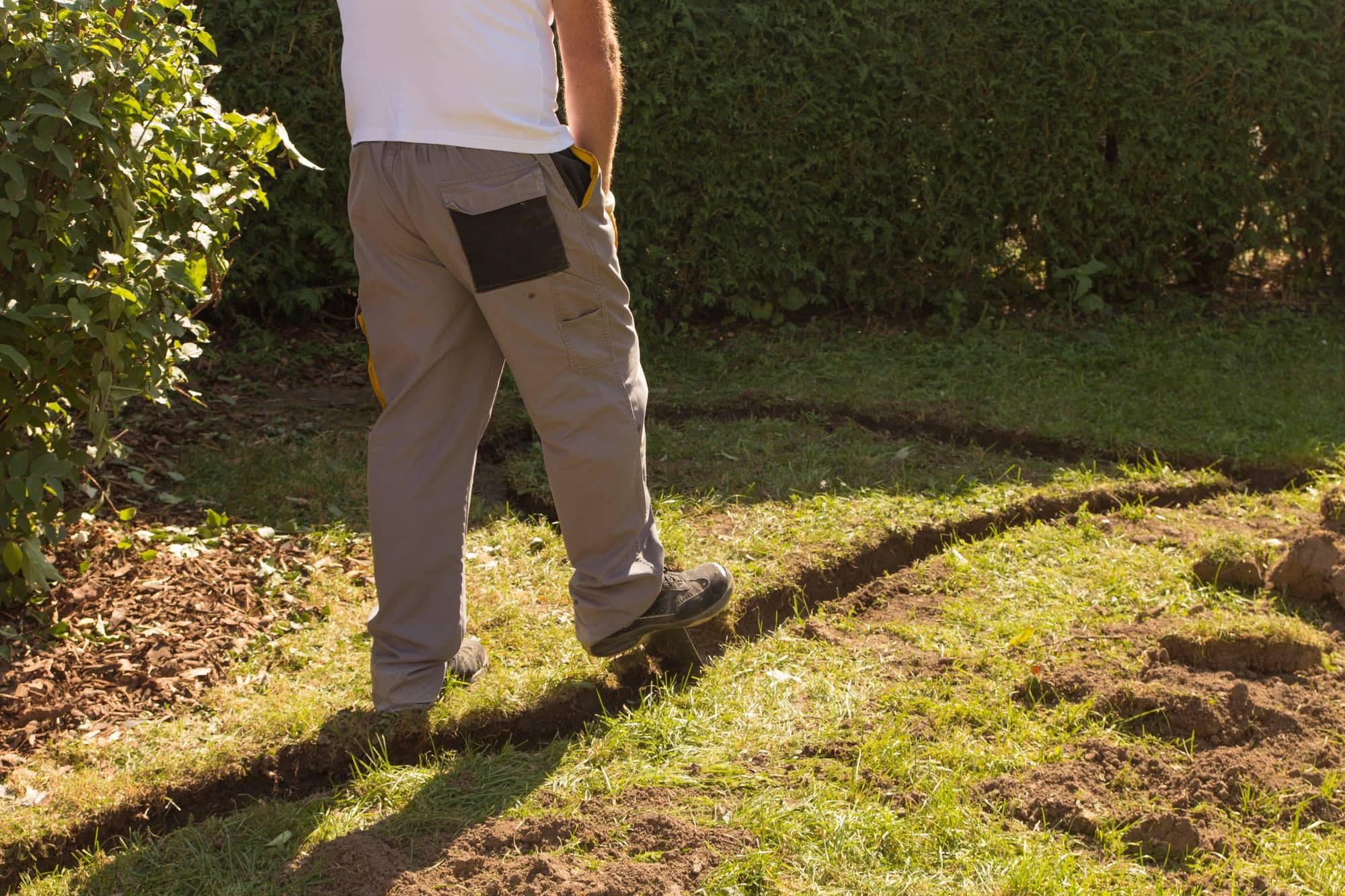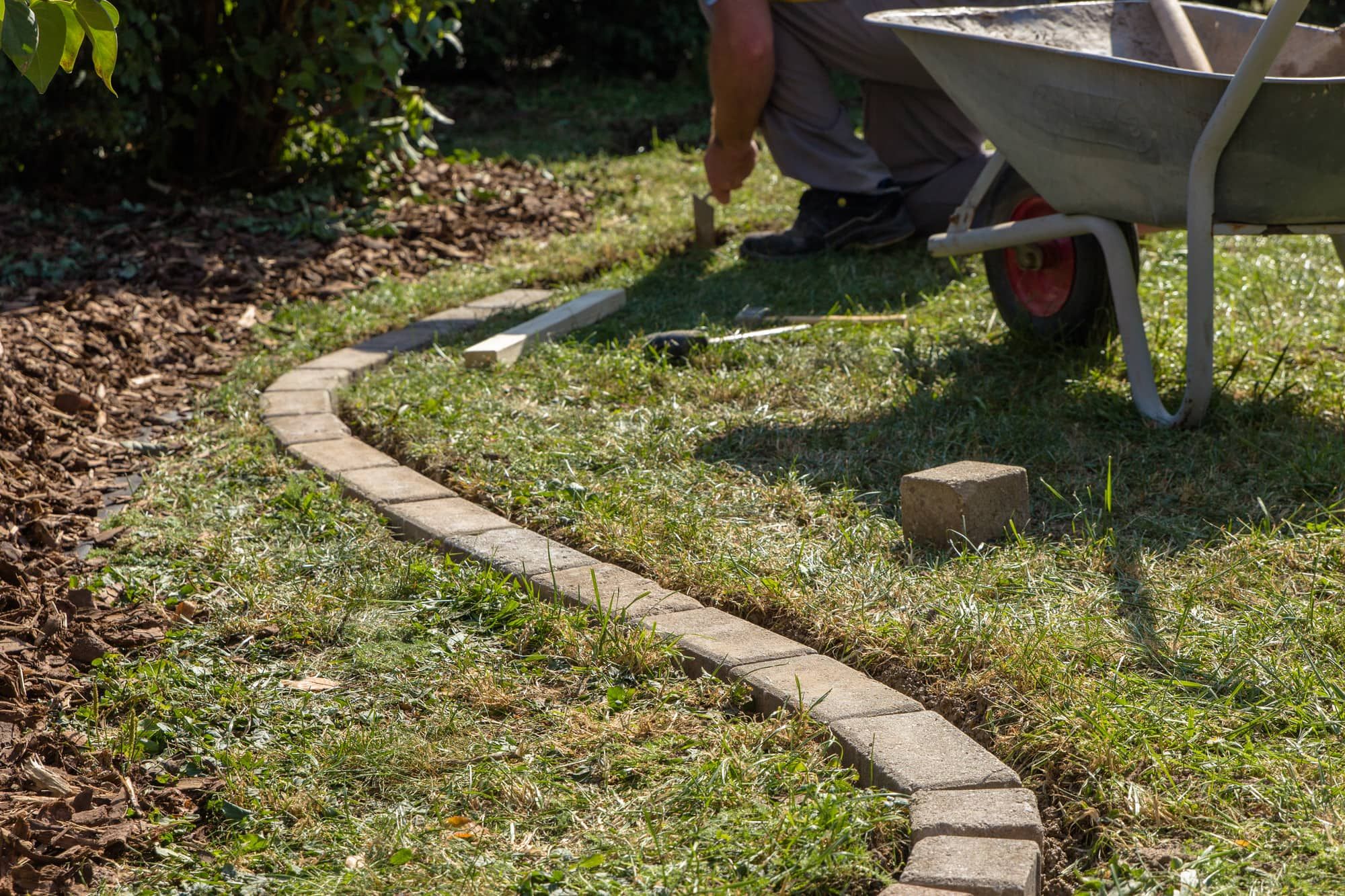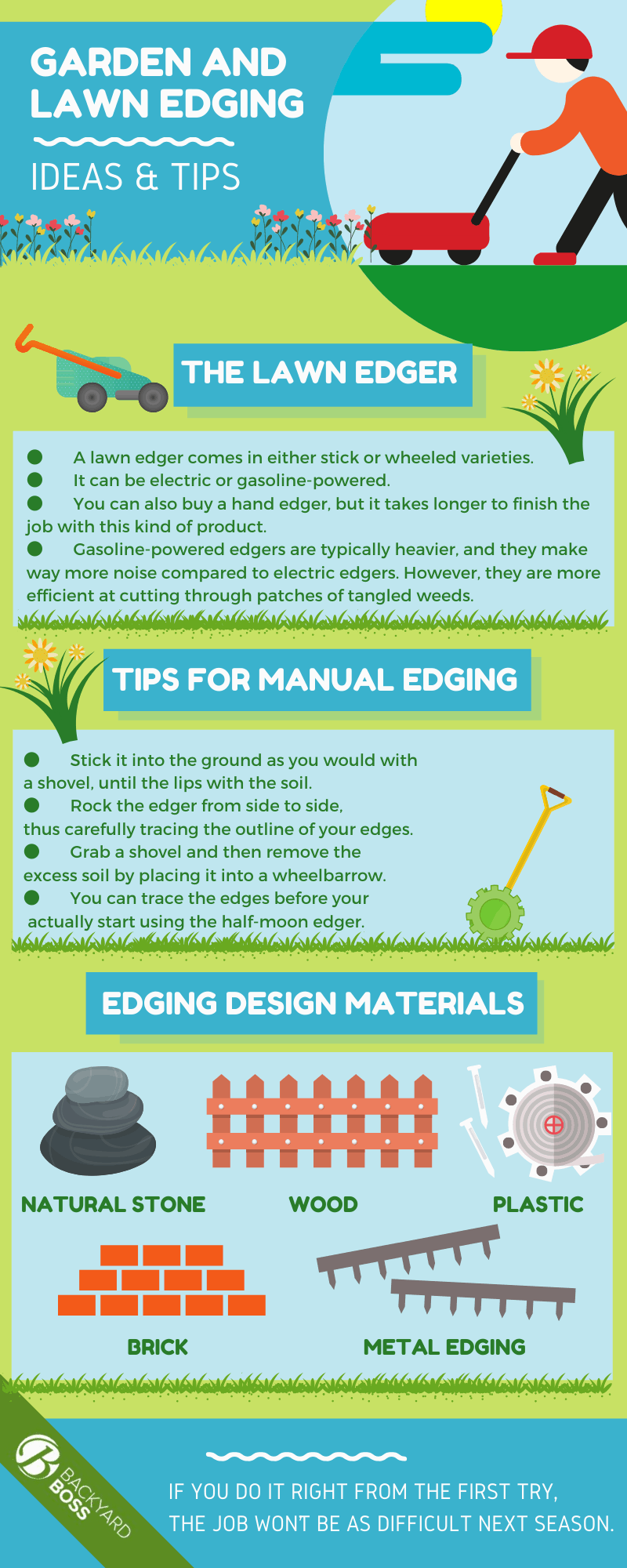By creating an edge that separates different areas of your lawn, your garden, your driveway, or whatever other yard elements you want separated, you’ll give your landscape a stunning visual effect. What a lot of people don’t know is that edging is more than just good looks: when done right, it can prevent grass from getting all over your flower bed, and it can prevent mulch from spilling over your pathways.
There are many different ways for you to create your own garden and lawn edging, with or without any fancy materials, large investment, and without you getting hurt in the process. Let’s examine some of your best options, shall we?
Lawn Edging
The edges of your lawn are just as important as every other step you take in order to make your yard look as nice as possible. Trimming the edges of the lawn is basically an impossible mission if your plan on using your regular lawn mower: a gizmo that big simply won’t do for such a delicate action.
Sure, hiring a landscape professional is always a good and hassle-free idea, but it’s also going to empty your pockets, so it’s not unusual for homeowners to tackle this matter with their own two hands. While the entire idea may seem intimidating at first, it’s actually quite an easy process that basically requires a lot of patience and some free time.
A common misconception about edging the lawn is that this is a process that involves cutting grass exclusively. Truth be told, you can define the edges of your garden by using stones, bricks, wooden slats, or whatever other materials you find aesthetically pleasing. The whole concept of lawn edging is to separate the different patches of your lawn into defined areas.
The Lawn Edger
Yes, the lawn edger is a specific tool that’s used exclusively for lawn edging. Before knowing how to use one, you have to know how to choose one, so here are some bits of info that might help:
- A lawn edger comes in either stick or wheeled varieties.
- It can be electric or gasoline-powered.
- You can also buy a hand edger, but it takes longer to finish the job with this kind of product.
- Gasoline-powered edgers are typically heavier, and they make way more noise compared to electric edgers. However, they are more efficient at cutting through patches of tangled weeds.
Needless to say, as with every other gardening activity, you need to be properly equipped before you start using the edger. Make sure that you’re wearing long pants, suitable shoes, but also goggles or glasses to protect your eyes. A pair of gloves will also come in handy, and don’t be afraid to use earbuds, because these things can be noisy.
As you’re ready to start the edging process, make sure that the blade of the device is pointed at the edge of the sidewalk, driveway, or wherever you’re ready to start cutting. Carefully observe any potential obstacles that might get in the way: this includes trees, shrubs, mailboxes, the garden gnome, the dog house, and others. Any of these can damage the blade, but also the object itself.
When making your way forward, dig a small trench that helps you keep the edger in position, but also gives it a sharp edge.
Tips for Manual Edging
If you’re willing to put in all the work yourself, you don’t even need a power edger, as you can use a half-moon manual edging tool. As the name suggests it, this shovel has a large blade shaped like half a moon, which rocks from side to side to help you edge your garden or lawn without the use of any fancy tools.
- When using this edger, stick it into the ground as you would with a shovel, until the lips with the soil.
- Rock the edger from side to side, thus carefully tracing the outline of your edges.
- Grab a shovel and then remove the excess soil by placing it into a wheelbarrow.
- You can trace the edges before your actually start using the half-moon edger. You can use either spray paint or a garden hose to help guide you on your path. But be careful not to damage the hose with your tool.
- Manual edging can be a complicated process if there is even the slightest risk of you sticking that tool into electric cable or plumbing.
Edging Design Materials
As we’ve mentioned before, edging isn’t always about straight lines, nor is it limited to cutting grass. You can get extremely creative with the materials involved in the process, and it even gives you the opportunity to use some of the materials that have been lying around in the attic/cellar/garage for ages.
- Natural stone is probably the most expensive way to create wonderful garden and lawn edges. It is both a durable option, as well as a beautiful-looking one. However, a lot of people give up on the idea because of the costs. Using natural stone as lawn edging is also difficult is you opt for large stones, which are particularly heavy. If you have some help around the yard, then it shouldn’t be a problem, but if you’re a homeowner working alone and have the occasional back problem, this might be an issue.
- Wood is another solid option, and a good-looking one at that. However, if you choose untreated wood, it will rot very quickly, particularly is you place it on moist soil. You have the possibility to purchase landscape timber, which is treated with preservatives that prolong its lifespan and the looks of the materials.
- Plastic is another option for garden and lawn edging, but there aren’t too many people out there happy with the looks. However, this is one of the most cost-efficient methods to create edges, plus they can be colored and decorated as you fancy.
- Brick is a more natural-looking option, and it gives the yard a very traditional look. You can also choose concrete, which offers pretty much the same benefits as brick. Make no mistake, these items aren’t cheap, and if the brick piece shift over time, patches of grass can grow between them.
- There are people who are fans of metal edging, particularly steel or aluminum, which are extremely resistant and a wise long-term investment. Aluminum is the more efficient options, as it doesn’t rust and it’s easier to work with. Steel is a more dangerous option, due to its sharp edges that pose a hazard if you somehow nick the edges with your lawn mower.
But these are just the most common choices that people turn to, and there are a lot more different options and materials for you to experiment with.
Making it Work
If you opt for edging the lawn with different types of materials, you can avoid having to trim the edges ever so often. Since we’ve previously mentioned some materials that could make it work, let’s go over some of the installation basics for a couple of them.
Concrete/Brick Pavers
This is a traditional way of creating a long-lasting edge for your garden or yard, offering the advantage of keeping grass out of the way. You can purchase concrete pavers which are specifically designed for outdoor use, and ready to withstand the test of time. Brick pavers are also a special type of bricks, which are more resistant and harder to break down.
When installing the pavers, make sure you place them on top of a sand bed, as they will be easier to level and position. The sand bed will also prevent roots from getting under the edging. A paved border can be installed in a straight line, but they work just fine for curves and uneven yards as well. However, they may require some cutting with a diamond blade saw if you’re looking to edge curves.
What you want to be careful with is leveling the pavers and aligning them so that each piece sits flush next to the previously-placed one.
Metal Borders
As mentioned earlier, people normally choose metal borders that are made from aluminum or steel, although the former is better for a number of different reasons. When placing your metal edges, make sure that the top stick out of the soil with about half an inch, which will help prevent roots from crossing over the top. It also makes the borders invisible, giving you the freedom to mow on top of them.
However, keep in mind that walking with your bare feet over this edge can result in injury, so this option isn’t exactly suitable if you have children running around the yard. Also, it’s best if you file the top edges after having installed them.
Start by cutting a trench that’s about four inches deep into the ground, along the pats you’re planning to follow when installing the edges. Place your metal edges in the narrow trench you’ve just dug, making sure there are no gaps in between the metal pieces.
Use stakes to keep the metal pieces in place, but take note that this may cause the garden edging to drop too low. If this happens, use the tip of the shovel to bring them back in place. When you’re done, make sure that you backfill the edging with compressed soil, to keep the metal secure in place.
Edging Installation Tips
One of the most important things about lawn edging is planning ahead, so that you’ll be able to work as little as possible on the longer run. If you do it right from the first try, the job won’t be as difficult next season.
Regardless of the material you choose for the edging, make sure that your yard also has the proper weather conditions to prevent it from deteriorating. If you’re using plastic and you live in a very warm climate, know that while the sun isn’t that strong as to melt it, it can however soften it. If you’re using untreated wood and your climate offer heavy rains, there are high chances of the wood rotting.
The best way to avoid losing money is to make sure that you choose the right edging material, one that’s cost efficient on the short and the long term.
Before you start working, it’s always best to draw a clear line of the edge that eliminates the two areas you want to visibly separate. As mentioned before, you can use anything from spray paint, string, markers, ropes, garden hoses, piece of wood, or whatever other materials allow you to shape your future edge. If there are any weeds you’d like to get rid of, it’s best to spray that weed killer prior to edging.
Depending on the type of edge you’re looking to install, the process can be as easy as pounding it into the ground with a hammer. Some sensitive object may break (like bottles, for instance), while some may pop out of the ground at some point in the future.
The best way to install edging is by digging a trench. This can be about four to six inches deep, while always following the outline that you’ve created using a marker, a garden hose, or whatever other object you found around the house.
Take note that the width of the trench should match the objects you’re trying to use for edging. There’s no point in making a wide trench if you’re going to use cobblestones. When the trench is complete, shove whatever object you were going to use for edging in the first place.
An important aesthetic tip is to make sure that the edges are of the same height (unless you’re intentionally opting for an asymmetrical design, which can be pretty neat if you’re placing vertical wooden poles on the edges). Typically, people don’t want the edges to stand out too much, as there are other yard elements much more worthy of attention.
If you want future mowing to be easier, consider the height of the edging no more than half an inch above the ground. This way, you can pass your lawn mower on top of the edging without causing any damage.
When all your edging is in place, fill the gaps left with the soil you removed when you dug up those trenches.
Conclusion
Hiring a professional landscaper is always a great idea if you have the money to spare. However, making your own garden and lawn edging doesn’t just save you a lot of money; it also gives you the opportunity to take pride in something you’ve accomplished by yourself.
You can opt for simple edging done with a special tool called a lawn edger, but you can also create edges made with different types of materials, ranging from metal to wood. This type of project is generally very easy to accomplish, and there are many different objects that you can use for creating some of the best garden and lawn edgings. Whether it’s glass bottles, seashells, or cobblestones, the process of installing your own edging is pretty simple.

